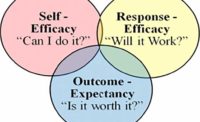Values are more constant than priorities. For individuals, values represent profound internal beliefs or attitudes that establish a context from which we evaluate past behavior and plan future behavior. Likewise, the values of an organization are defined in its mission statement and provide direction for short- and long-term action plans. Given this definition, it’s obvious why it’s better to talk about safety as a value than a priority. Priorities are compromised to make way for other priorities. Values are rarely compromised. They serve as the standard against which we judge the appropriateness of our behaviors. When our actions are inconsistent with our values, we willingly make appropriate adjustments to align behavior with value.
Thus, if safety is considered a value, the safest way to do something becomes the standard against which ongoing work practices are evaluated; and if an inconsistency is pointed out, behavior is willingly changed. Recently, safety consultants have advocated a values-driven approach to safety, sometimes as a critique of behavior-based safety. It’s not enough to change people’s behavior, these consultants say, you must get inside people and change their values. I do not disagree with such assertions. But a values-based approach to safety is not inconsistent with a behavior-based approach. This is fortunate, because there are many more techniques available to influence behaviors than values in an organizational setting.
If a person holds safety as a value, or at least accepts the notion that safety should be a value rather than a priority, then it’s relatively easy to increase behaviors consistent with this value and to decrease behaviors inconsistent with safety. It starts with helping people understand what is safe behavior. Then when you observe an inconsistency between a value and a behavior, it’s not necessary to apply distasteful punishment procedures. Instead, point out the inconsistency and expect a change consistent with the value. This illustrates the Principle of Consistency -- a powerful determinant of behavior and attitude change.
A personal anecdote
What would be your reaction if you received a phone call from a police officer regarding your child? Your heart would undoubtedly pound furiously with fear of hearing some terrible news. If the call was to inform you that your 16-year-old would be held overnight in jail for consuming alcohol if you didn’t go to the station, then how would you react? Would you begin planning a series of punitive consequences (referred to as "discipline" in industry) so as to make certain this teenager would never consume alcohol again before age 21? Five parents got such a phone call from the Blacksburg Police Department one evening not too long ago. Their children, all 16-year-old varsity athletes, were stopped, searched, handcuffed, and arrested for underage drinking. One of them was mine.Inconsistent behavior
My wife Carol took the phone call from the Blacksburg police officer, and drove to the station. Yes, this was the teenager I’ve written about many times to illustrate youth involvement in safety efforts. Now my daughter was caught doing something completely inconsistent with the internal value that should have developed from her personal involvement in safety and health promotion. I was reassured she had the right values when she sobbed uncontrollably to her mother. "I’m so embarrassed, Mom," she said. "This is like a bad dream; this is not me." "Right," said Carol, "this is not you."What consequences?
What punitive consequences are appropriate for this situation? Underage drinking is surely a tragic public health problem, and the thought that such behavior could lead to alcohol-impaired driving is downright scary. So what should a parent do? It was interesting, and predictable, to learn what the parents of these five teens did.As you might have guessed, the common reaction was to exert additional punitive controls. At a minimum, all of the girls were grounded over the Christmas holidays. One lost her car privileges, which forced her to take the bus to school (humiliating for this teen). Another, who claimed she had not been drinking alcohol, was forbidden to interact socially with any of the other four cohorts. There, the threat of external control motivated another undesirable behavior: when we do not own up to our mistakes, we don’t experience maximum inconsistency between our behavior and our values. Then we don’t feel obligated to change our behavior.
According to The Consistency Principle, my wife had the best reaction in this situation. She reinforced the inconsistency between our daughter’s behavior and her values. She actively listened to her description of the humiliating experience of being searched and handcuffed and escorted to the police station. The police officers appeared unimpressed with our daughter’s report that she had assisted my research projects to prevent drunk driving. By responding with empathy, Mom enabled her daughter to own the inconsistency between her behavior and her values. This maximized the probability of values-driven behavior.
To be sure, Carol and I are thankful for the external controls that threaten humiliating penalties for noncompliance with drug-use laws. And we are grateful our daughter experienced the punitive consequences, and appeared in court to state remorse. But we also realize these external controls are not sufficient to maintain safe behavior. The perceived improbability of getting caught again cannot compete with the daily influence of peers tantalized by forbidden fruits. We can only hope pressure to avoid inconsistencies between behavior and value will be more powerful than pressures to conform with the risky behaviors of others.
The connection
I hope the connection between a family’s experience with underage alcohol consumption and values-driven safety is clear: An external threat is often most convenient and expedient, but it has clear disadvantages if you’re attempting to make safety a value. In some cases, severe threats can actually make the undesirable behavior seem desirable. In situations with exclusive top-down controls and minimal bottom-up empowerment, getting away with noncompliance is reinforced with outside peer support and inside feelings of individual freedom. We need to understand and believe values-driven safety cannot be dictated. Values can be developed from outside sources that encourage voluntary participation in activities supporting a particular value. We internalize the principles and lessons we choose to experience, but we are apt to resist those we feel are forced upon us.It’s a difficult but important challenge to provide just enough outside influence to make a program or process appear worthwhile without inhibiting personal choice and control. Remember another behavioral science principle I’ve discussed in ISHN articles: we perceive more choice and personal control when working to achieve positive consequences (rewards) than when working to avoid negative consequences (penalties).

